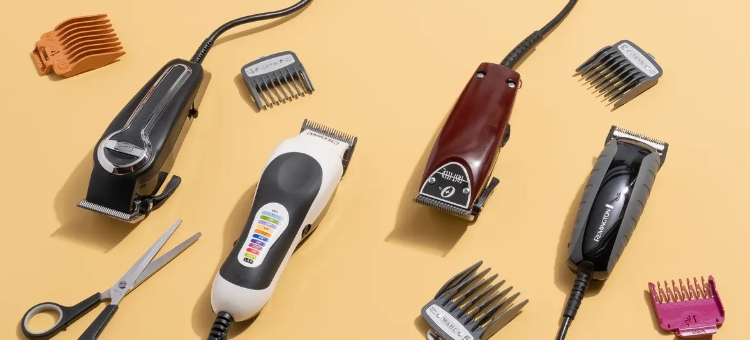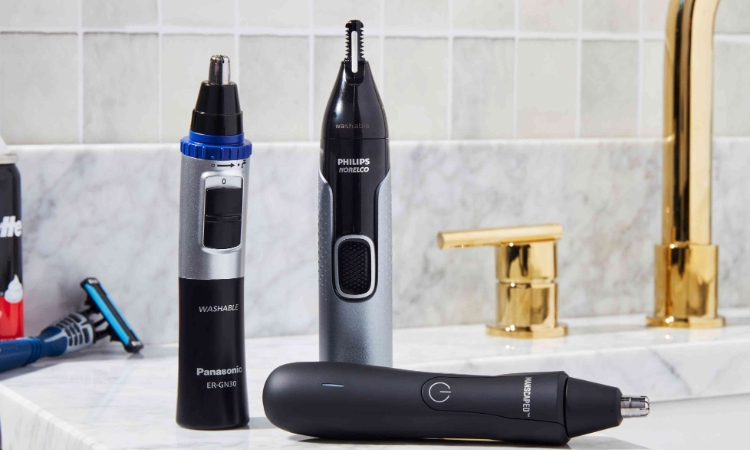
One significant lesson we've learned during lockdown is how to cut our own hair. Whether you're dealing with unruly long hair, facial hair, body hair, or scalp hair, you can maintain control over your grooming routine as long as you understand which tools to utilize.
Familiarizing yourself with the appropriate techniques and tools for self-haircutting allows you to stay well-groomed during prolonged situations like lockdowns. Not only does it save you valuable time, but it also spares you the expense of regular visits to a barber. The essential tools you'll need will depend entirely on your specific grooming requirements.
To determine which tools best suit your needs, it’s crucial to grasp the distinctions between the various options available. While most tools are easily categorized, many individuals often confuse hair clippers with hair trimmers. Therefore, we've prepared this comprehensive guide to clarify the differences between these two devices, ensuring you never mistakenly order the wrong one.
Table of Contents:
Part 1: Understanding Hair Clippers

A hair clipper is specifically designed for cutting thick hair, whether on your beard or scalp. It features large blades that engage with one another, resulting in an even and precise cut. By using guard combs and various attachments, you can explore numerous styling possibilities from the comfort of your own home.
Clippers come in different sizes, typically ranging from size 0 to size 12. These sizes correspond to the different guards that dictate how much hair is left behind after cutting. For example, a size 0 leaves approximately 1/6 inches of hair, while a size 12 allows for a length of 1.5 inches.
Part 2: Understanding Hair Trimmers
As the name suggests, hair trimmers are designed to trim hair rather than cut it. They are ideal for managing shorter hair lengths and are well-suited for detailing your beard, sideburns, cheek lines, and edges with precision.
Equipped with smaller and finer blades, hair trimmers feature shark-like teeth that facilitate accurate cutting. Most trimmers are made of hypoallergenic stainless steel, making them suitable for use on sensitive areas of the body.
There is a diverse array of trimmers available, such as bikini trimmers, ear and nose trimmers, and beard trimmers. It is advisable to consider your specific needs when selecting a hair trimmer.
Part 3: Distinguishing Between Clippers and Trimmers
By now, you should have a general understanding of the purpose of each tool. However, if there is still any confusion, this section will help clarify their differences and guide you toward the right choice.
Size and Weight
Clippers are designed for heavy-duty tasks, which is why they are larger and typically heavier. This increased weight can make them cumbersome to hold for extended periods, leading to stiffness and fatigue in your hands after cutting your hair.
In contrast, trimmers are compact and lightweight, allowing users to easily maneuver them over longer durations. Consequently, when it comes to user experience, trimmers often provide a more comfortable option than clippers.

Blade Design
The configuration—number, size, and width—of the blades in each hair removal tool directly corresponds to their intended function. A hair clipper typically has two comb-like blades that activate simultaneously when the device is turned on. As you glide them through your hair, one blade captures the strands while the other oscillates back and forth.
This oscillating motion ensures a uniform and efficient cut. Conversely, trimmer blades also operate on oscillation but are shorter, thinner, and more numerous than those found in clippers. They consist of stationary and movable blades that interlock to pinch hair, delivering the desired results.
Functionality
Having covered the structure of hair clippers and trimmers, let’s explore their specific functionalities.
Hair clippers are designed for heavy lifting, effectively cutting long hair to lengths of at least 1.5 inches. They are especially suited for cutting hair on the scalp or for shortening long, coarse beard hair. Moreover, their larger cutting heads make them ideal for use on broader areas.
In contrast, hair trimmers are designed to handle delicate areas that clippers cannot reach. They can cut hair very close to the skin, making them ideal for fine facial hair, tidying up sideburns, and adding detail to your beard.






































